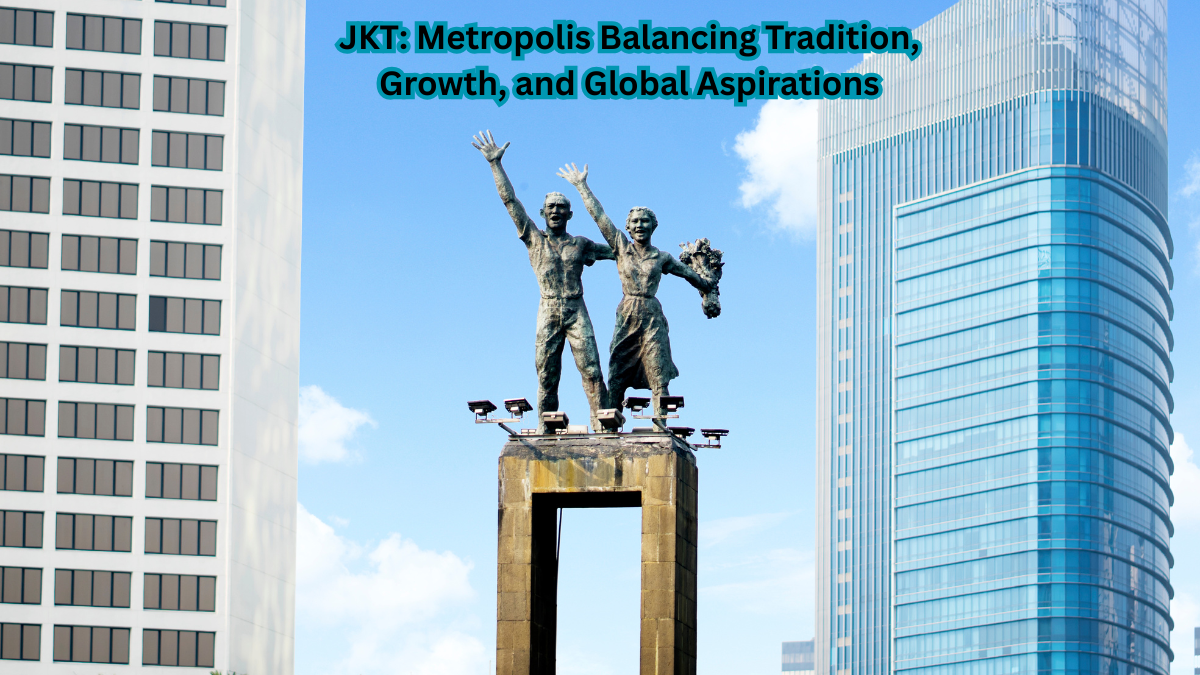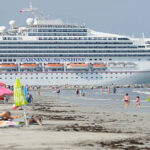In today’s global conversation, the word JKT immediately brings to mind a vibrant city of contrasts—Indonesia’s bustling capital, Jakarta. Known to locals as “JKT” in casual reference, the city is more than just a megacity with skyscrapers and traffic jams. It is a symbol of resilience, a cultural mosaic, and a hub where history meets the urgency of modern life. For anyone curious about what JKT means beyond the abbreviation, this is not only a city but a living story of transformation, one that asks the world to see it in layers: cultural depth, economic gravity, environmental struggles, and an increasingly global outlook.
The Identity of JKT
JKT is shorthand for Jakarta, the political and economic heartbeat of Indonesia. With more than 30 million people in its greater metropolitan area, JKT is one of the largest urban regions on the planet. It is a place where Bahasa Indonesia, Javanese, Betawi, and dozens of other languages are spoken daily; where mosques rise near churches and temples; and where food stalls sit under the shadows of gleaming towers.
To understand JKT is to understand a crossroads. The city has long been a meeting place—traders, colonial powers, independence leaders, and now digital nomads all converge here. Jakarta’s identity is never static. Instead, it is shaped by waves of migration, political movements, and global economic flows.
A Brief Historical Trajectory
JKT’s roots stretch back centuries. It was once known as Sunda Kelapa, a port city central to spice trade routes. Later, the Dutch renamed it Batavia, building canals and administrative quarters that still mark parts of the cityscape today. Independence in 1945 gave the city a new identity, one centered on national pride and modern nation-building.
- Pre-Colonial Era: Known for maritime trade, connecting Asia, Africa, and the Middle East.
- Colonial Period: Dutch East India Company influence left European-style architecture.
- Post-Independence: Jakarta became the face of Indonesian sovereignty and modernization.
- 21st Century: Rapid urban expansion, digital revolution, and global integration.
The layers of history are visible in its streets: from the cobblestone lanes of Kota Tua to the post-modern towers of Sudirman.
Economic Significance of JKT
Jakarta is not just Indonesia’s capital—it is its economic anchor. Nearly 20% of Indonesia’s GDP flows through JKT. The city’s financial district houses regional headquarters of banks, multinational corporations, and tech startups.
Key Economic Drivers
| Sector | Role in JKT’s Economy | Emerging Trends |
|---|---|---|
| Finance | Banking, insurance, fintech | Rise of mobile banking & e-wallets |
| Trade | Regional and international commerce | E-commerce surging in post-pandemic years |
| Technology | Startup ecosystems and digital platforms | Focus on AI, ride-hailing, and e-commerce |
| Real Estate | High-rise developments, malls, and mixed-use projects | Growth of smart-city infrastructure |
| Creative Industry | Film, fashion, music, and cultural festivals | Exporting Indonesian talent globally |
Jakarta’s stock exchange, located in the Sudirman Central Business District, reflects its centrality to Southeast Asia’s financial map. Yet, the informal economy—street vendors, small traders, and artisans—remains equally significant.
“Jakarta’s economy is like its streets: crowded, complex, and full of surprises.” – Local Economist
Cultural Mosaic of JKT
Culture in JKT is a dance between tradition and modernity. The Betawi people, indigenous to the area, shaped much of the city’s early identity with language, music, and cuisine. But as waves of migrants arrived—from Java, Sumatra, Bali, Sulawesi, and beyond—the city evolved into a cultural melting pot.
- Language: While Bahasa Indonesia is official, Betawi slang (“Bahasa Jaksel”) influences youth culture.
- Cuisine: From street-side satay to high-end fusion dining, food mirrors diversity.
- Art & Music: Dangdut clubs, indie rock venues, and art fairs all coexist.
- Festivals: Jakarta Fair, Independence Day celebrations, and international expos bring communities together.
“JKT feels like ten cities packed into one—each neighborhood tells its own story.” – Travel Writer
Infrastructure and Urban Challenges
Jakarta is both inspiring and overwhelming. It has an extensive bus rapid transit system (TransJakarta), new MRT lines, and a growing light rail. Yet, daily life for many still means sitting in traffic for hours.
Key Challenges Facing JKT:
- Traffic Congestion: Among the worst globally.
- Flooding: Seasonal floods threaten homes and infrastructure.
- Overpopulation: Population density strains resources.
- Environmental Stress: Pollution and land subsidence pose risks.
- Relocation of Capital: Indonesia is moving its administrative capital to Nusantara in Borneo, but Jakarta remains the economic and cultural giant.
Urban planners are experimenting with “smart city” solutions—AI-powered traffic management, green spaces, and flood resilience projects—but challenges persist.
Education and Innovation
JKT is home to prestigious universities such as the University of Indonesia and BINUS University. It is also a startup hub where innovation thrives. Co-working spaces in Kemang, South Jakarta, host young entrepreneurs building apps for ride-hailing, digital health, and education technology.
Educational reform and digital literacy are shaping a new generation of Jakartans who are more globally connected yet rooted in local traditions.
Lifestyle in JKT
For residents, daily life is shaped by contrasts. Luxury malls like Plaza Indonesia sit near traditional wet markets. International schools attract expat families, while local warungs remain central to community dining.
Everyday Rhythms of JKT:
- Morning: Commuters flood trains, buses, and ride-hailing bikes.
- Afternoon: Office towers buzz with meetings and coffee breaks.
- Evening: Street food vendors set up, nightlife awakens.
- Weekend: Families flock to malls, theme parks, and coastal getaways like Ancol.
“Jakarta teaches you patience, but rewards you with experiences you won’t find elsewhere.” – Long-term Expat
The Global Outlook
Jakarta is increasingly global. It hosts international summits, attracts foreign investment, and nurtures a growing expat community. Indonesian pop culture, including K-pop-influenced bands and Netflix-featured films, is amplifying Jakarta’s reach.
The relocation of Indonesia’s political capital does not diminish Jakarta’s status. Instead, it allows JKT to redefine itself: less burdened by bureaucracy and more focused on being Southeast Asia’s financial and cultural hub.
Looking Ahead
The story of JKT is still unfolding. It is a city facing monumental challenges—climate change, urban sprawl, inequality—but also possessing unmatched energy. The next decades may transform Jakarta into a smarter, greener, more sustainable metropolis.
The question remains: can JKT maintain its soul while adapting to global pressures? If history is any guide, the city will bend but not break.
Frequently Asked Questions (FAQs)
1. Why is Jakarta often referred to as JKT?
JKT is a shorthand abbreviation, commonly used in airports, pop culture, and daily conversation to refer to Jakarta.
2. What are the biggest challenges facing JKT today?
Flooding, congestion, pollution, and land subsidence are pressing challenges alongside economic inequality.
3. How is JKT changing with the new capital move?
While the government is shifting administration to Nusantara, JKT remains the economic, cultural, and commercial center of Indonesia.
4. What makes JKT culturally unique?
Its diversity. Betawi heritage blends with influences from across Indonesia, creating unique cuisine, festivals, and urban lifestyles.
5. Is JKT a good place to visit for tourists?
Yes. Tourists find rich history in Kota Tua, vibrant nightlife, diverse dining, and easy access to cultural and coastal experiences.











